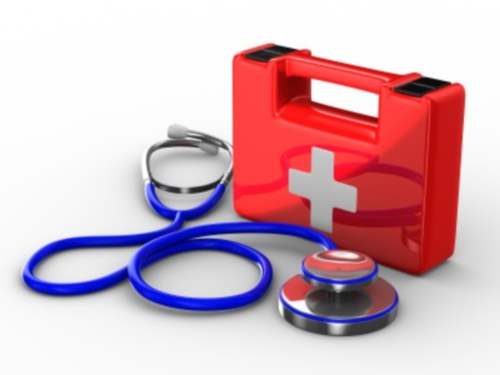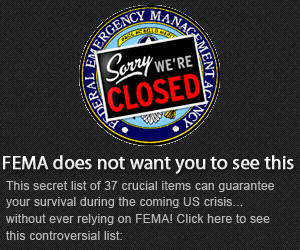Okay, I am sure you all have a medical kit to be proud of, you’ve got all the bandages, the slings, the ointments and creams, but sometimes, just sometimes, the most mundane items can make life simpler, especially if you need to move fast, or find yourself in a situation where you need to improvise, or, the stuff you have just isn’t right for the job in hand. Here are a few ideas, and examples of what to use them for.
AN OLD CREDIT CARD/ATM CARD
These are great for a good deal more than stuffing in a hole in the wall of your bank. Scraping out a sting with the edge of a plastic card is preferable to fingernails or tweezers, both of which, just by the pinching action pump the last bit of venom from the sting into the skin.
Cut into strips they are excellent splints for broken fingers, and the gaps between the strips allow for swelling. Position either side of the finger and tape into place.
Used whole they can help inflate a deflated lung caused by a sucking chest wound. Put over the hole and tape on three sides only, the card acts as a flutter valve, preventing air from entering the wound but allowing air outside of the lung but inside the chest cavity to escape as the lung inflates.
DUCT TAPE
I love duct tape, it needs to be good tape, not a cheapo one that is not very sticky. Use to secure the card to the chest as described above. It can be used to hold splints on limbs in place, to secure pressure dressings,and even to make a makeshift stretcher to carry a casualty if wrapped around two poles and stuck to itself across the gap between them. There are dozens of uses for this stuff.
A DOZEN MIXED SIZE CLEAR PLASTIC BAGS
Clear plastic bags form a great barrier between a wound and the air, preventing pathogens from getting into the body. They are great for wounds and burns on hands and feet and are carried in ambulances for this reason. Duct tape into place and the wound will stay clean until you can deal with it. This is particularly beneficial if you are near water and you want to prevent contamination.
Use as a flutter valve on large sucking chest wounds. Fix on three sides as described for the card method above.
SANITARY PADS/APPLICATOR TAMPONS
Sanitary pads make really good pressure dressings. Put over the wound and tape tightly down covering the whole pad with tape, extend the tape a good distance from all edges of the pad to make sure the pressure is maintained.
Applicator tampons are good for plugging penetrating wounds. They should be removed carefully to avoid dislodging clots that have formed in the wound.
Find out more about first aid and off-grid survival on Conquering the Coming Collapse.
HALF A DOZEN STRONG TEA BAGS
Tea leaves contain tannin which has anti-inflammatory and vaso-constrictor properties. To wash out an eye make as you would tea, leave to cool and lean forward so the liquid in the container reaches the eye and open and close the eye whilst in the liquid. The tea bag can be placed on the eye afterwards, to reduce any swelling and irritation.
Tannin is a vasoconstrictor, it causes blood vessels to contract and therefore slows blood loss. It would be no use at all for anything major, but for nosebleeds, traumatic tooth extractions and minor cuts and abrasions, it works well. Put just enough boiling water on the tea bag to make it swell to its maximum size and show a little liquid leaking from it, then when it has cooled sufficiently apply it to the tooth socket, cut etc. for nose bleeds roll the bag as small as you can and plug the nostril with as much of it as you can, you can cut it in half if need be and roll so as the cut edge is on the inside of the roll. There is no worry about sterility with a nose bleed.
STRONG SMELLING VAPOUR RUB
There are times when the smells around you are almost too much to bear. Infected wounds, corpses, human waste all give off gut-wrenching odours and dabbing vapour rub under your nose helps a great deal.
The vapour also causes the eyes to water which assists in removing debris from the eyes as it washes out with the tears.
A SUPER ABSORBENT DRYING CLOTH
 These microfiber cloths are very light weight and take up almost no space. They are excellent for drying around wounds so that dressings and tapes stick more easily.
These microfiber cloths are very light weight and take up almost no space. They are excellent for drying around wounds so that dressings and tapes stick more easily.
As they hold a good amount of liquid, one dunked in water and lightly squeezed out is useful for giving a casualty that cannot sit properly sips of water, they just suck on the cloth. Lying a microfiber cloth on wet/dew laden grass will allow enough water to be soaked up for a drink.
AN EMPTY SODA BOTTLE
Cut off the top and bottom and then cut it along it’s length. This gives you a sheet of strong plastic that rolls back into a tube when you let it go. These make great splints, keeping clothing etc away from a wound or helping to immobilize a broken bone. Unroll, place around the limb and gently let it go back into its tube shape. Then, very gently, close the plastic up, one edge will slide under the other with little effort. Fix in place with a piece of tape. To store, roll it up tight and secure with a rubber band.
A PAIR OF ADULT OVER THE KNEE SOCKS
Get an adult pair of knee high socks and force them over a large, full soda bottle to stretch them. When stretched for a couple of days, roll them down the bottle so what you end up with resembles a donut, store them in this shape so that they can be rolled onto a limb rather than forced up over it causing pain and possibly more injury.
They are great for holding arm and leg dressing in place, and make a good sling for arm injuries if the patient has short sleeved clothing on. Roll onto the arm, position the arm comfortably and safety pin to the patients clothing in a couple of places, beats messing about with a triangular bandage if you are in a hurry. If they have long sleeves, position the arm and pin the cuff end of the sleeve to the body of their clothing.
Well there you have it, a few conventional items with a few unconventional uses.
Take Care
Lizzie
Other useful resources:
Blackout USA (EMP survival and preparedness guide)
Backyard Innovator (All Year Round Source Of Fresh Meat,Vegetables And Clean Drinking Water)
Conquering the coming collapse (Financial advice and preparedness )
Liberty Generator (Easy DIY to build your own off-grid free energy device)
Backyard Liberty (Easy and cheap DIY Aquaponic system to grow your organic and living food bank)
Bullet Proof Home (A Prepper’s Guide in Safeguarding a Home )
Family Self Defense (Best Self Defense Strategies For You And Your Family)
Sold Out After Crisis (Best 37 Items To Hoard For A Long Term Crisis)
Source: theorganicprepper.ca
Originally Published at Underground Medic By Lizzie Bennett

One Reply to “Ten unconventional additions to your emergency medical kit”